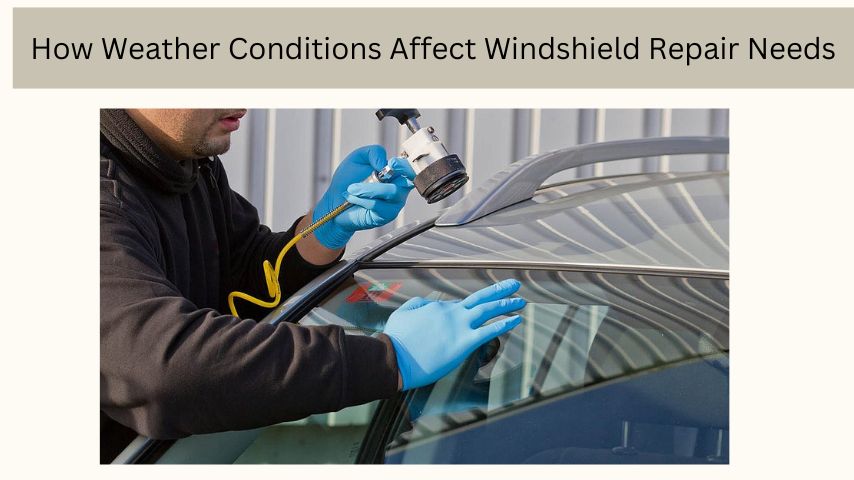
How Weather Conditions Affect Windshield Repair Needs
Your car’s windshield is a vital part of its safety features, providing structural support and protecting you from the elements. However, the weather can significantly impact the condition of your windshield and your need for repairs. Understanding how different weather conditions affect your windshield can help you take better care of your vehicle and know when it’s time to seek professional windshield repair. In this blog, we will explore the effects of various weather conditions on your windshield and provide tips on how to manage and mitigate these effects.
NOTE: Don’t let weather conditions compromise your safety. If you notice any chips or cracks in your windshield, contact a reliable Windshield Repair service today to ensure your windshield is repaired quickly and correctly. Your safety and the longevity of your car depend on it!
The Impact of Temperature Changes
Extreme Heat
Extreme heat can cause significant stress on your windshield. When your car is exposed to direct sunlight for long periods, the glass can expand. This expansion can exacerbate existing chips and cracks, causing them to spread. Moreover, if you use cold water to clean a hot windshield, the sudden temperature change can lead to further cracking.
Cold Weather
Cold weather has its own set of challenges for windshields. When temperatures drop, the glass contracts, which can cause existing cracks to widen. If moisture gets into these cracks and freezes, it can expand and make the damage worse. Using hot water to defrost a frozen windshield can also cause rapid expansion and cracking.
Rapid Temperature Fluctuations
Rapid changes in temperature, such as using a heater to warm up your car quickly on a cold day, can stress the windshield. The inside of the glass heats up faster than the outside, causing uneven expansion and increasing the risk of cracks spreading.
The Effects of Rain and Humidity
Moisture Seepage
Rain and high humidity can allow moisture to seep into chips and cracks in your windshield. This moisture can make its way into the layers of glass, leading to delamination or separation of the glass layers. Over time, this can weaken the windshield and make it more prone to damage.
Reduced Visibility
Heavy rain can impair visibility, especially if there are existing chips or cracks that create additional glare and distortion. Water can also get trapped in the cracks, making them more noticeable and distracting while driving.
The Influence of Snow and Ice
Snow and Ice Accumulation
Snow and ice can put additional weight on your windshield. The extra pressure can worsen existing damage or create new cracks. Scraping ice from your windshield can also scratch the glass, especially if you’re using a rough or metal scraper.
Use of De-icers
Chemical de-icers can help remove ice from your windshield, but they can also seep into cracks and chips. Some de-icers contain chemicals that can further damage the glass or cause the cracks to spread.
Wind and Debris
Flying Debris
Strong winds can blow debris like small rocks, twigs, and other particles onto your windshield, causing chips and cracks. Driving in windy conditions can increase the likelihood of such damage, especially if you are following closely behind other vehicles.
Abrasive Particles
Dust and sand carried by the wind can act like sandpaper on your windshield. Over time, this can lead to pitting and scratches, which can impair visibility and weaken the glass.
Tips for Protecting Your Windshield
Park in a Garage or Shaded Area
Whenever possible, park your car in a garage or shaded area to protect it from extreme temperatures and direct sunlight. This can help prevent the glass from expanding and contracting, reducing the risk of cracks spreading.
Use a Windshield Cover
A windshield cover can protect your windshield from snow, ice, and debris. It can also help maintain a more consistent temperature on the glass, reducing the stress caused by rapid temperature changes.
Avoid Sudden Temperature Changes
Try to avoid sudden temperature changes that can stress your windshield. For example, gradually warm up your car instead of blasting the heater, and avoid using hot water to defrost a frozen windshield.
Regular Inspections
Regularly inspect your windshield for any chips or cracks, especially after severe weather conditions. Catching damage early can prevent it from spreading and becoming more costly to repair.
Professional Windshield Repair
If you notice any chips or cracks, seek professional windshield repair as soon as possible. A professional can assess the damage and recommend the best course of action, whether it’s a simple repair or a full replacement.
Conclusion
Weather conditions can have a significant impact on the condition of your windshield. Understanding how different types of weather affect your windshield can help you take proactive steps to protect it. By parking in sheltered areas, avoiding sudden temperature changes, and regularly inspecting your windshield, you can minimize damage and ensure your safety on the road.
For more insightful articles related to this topic, feel free to visit liveblogaus.


